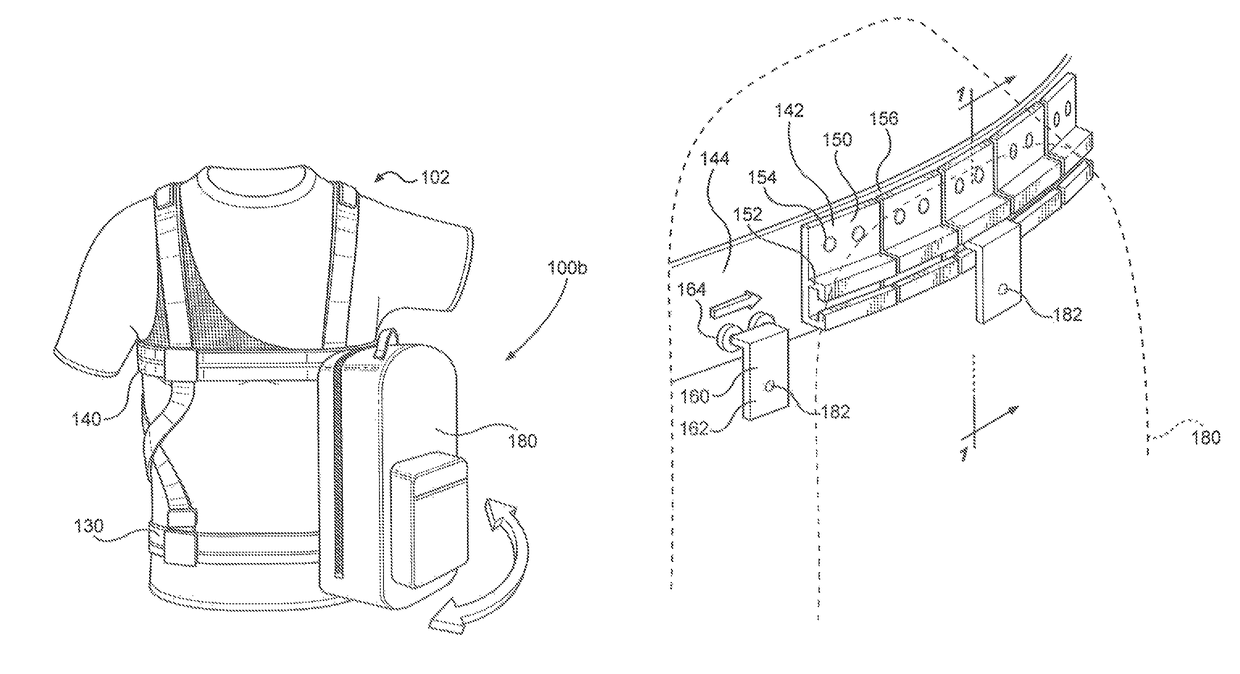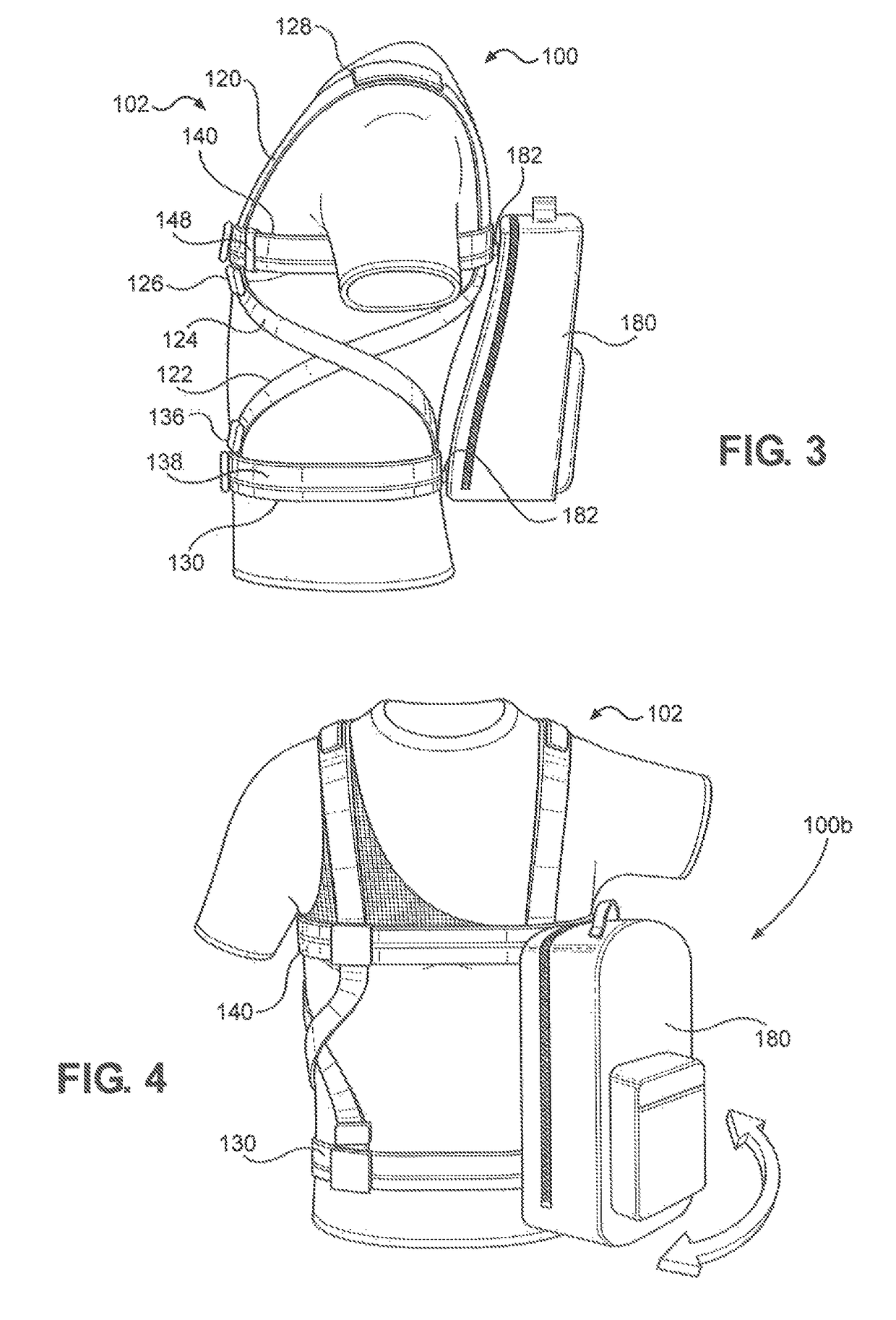Front-back pack
a front-back pack and backpack technology, applied in the field of storage packs, can solve the problems of difficulty and discomfort in sitting on a chair or a bench with a backpack, sitting in an awkward and possibly dangerous position, and risking the pack and its contents to fall, so as to facilitate and quickly transition, sit comfortably and safely, and easily access the
- Summary
- Abstract
- Description
- Claims
- Application Information
AI Technical Summary
Benefits of technology
Problems solved by technology
Method used
Image
Examples
Embodiment Construction
[0046]Referring initially to FIG. 1, a perspective view of the preferred embodiment, the Front-Back Pack of the present invention is shown and generally designated 100. The Front-Back Pack 100 includes a harness system 102 and an attached slidable pack 180.
[0047]The harness system 102 is a system of interconnected straps, buckles, clips, and various other pieces which allows the secure and removable attachment of the harness system 102 and attached slidable pack 180 to a user. The harness system 102 has a first shoulder strap 110 and a second shoulder strap 120. The first shoulder strap 110 is made of a sturdy and flexible material such as nylon, polyester, or any other materials having similar characteristics. The shoulder strap 110 has a stationary strap 112 and an adjustable strap 114. One end of the stationary strap 112 is attached to a lower slide rail assembly 130 and the opposite end of the stationary strap 112 is a slide 116. Removably attached to slide 116 is adjustable str...
PUM
 Login to View More
Login to View More Abstract
Description
Claims
Application Information
 Login to View More
Login to View More - R&D
- Intellectual Property
- Life Sciences
- Materials
- Tech Scout
- Unparalleled Data Quality
- Higher Quality Content
- 60% Fewer Hallucinations
Browse by: Latest US Patents, China's latest patents, Technical Efficacy Thesaurus, Application Domain, Technology Topic, Popular Technical Reports.
© 2025 PatSnap. All rights reserved.Legal|Privacy policy|Modern Slavery Act Transparency Statement|Sitemap|About US| Contact US: help@patsnap.com



